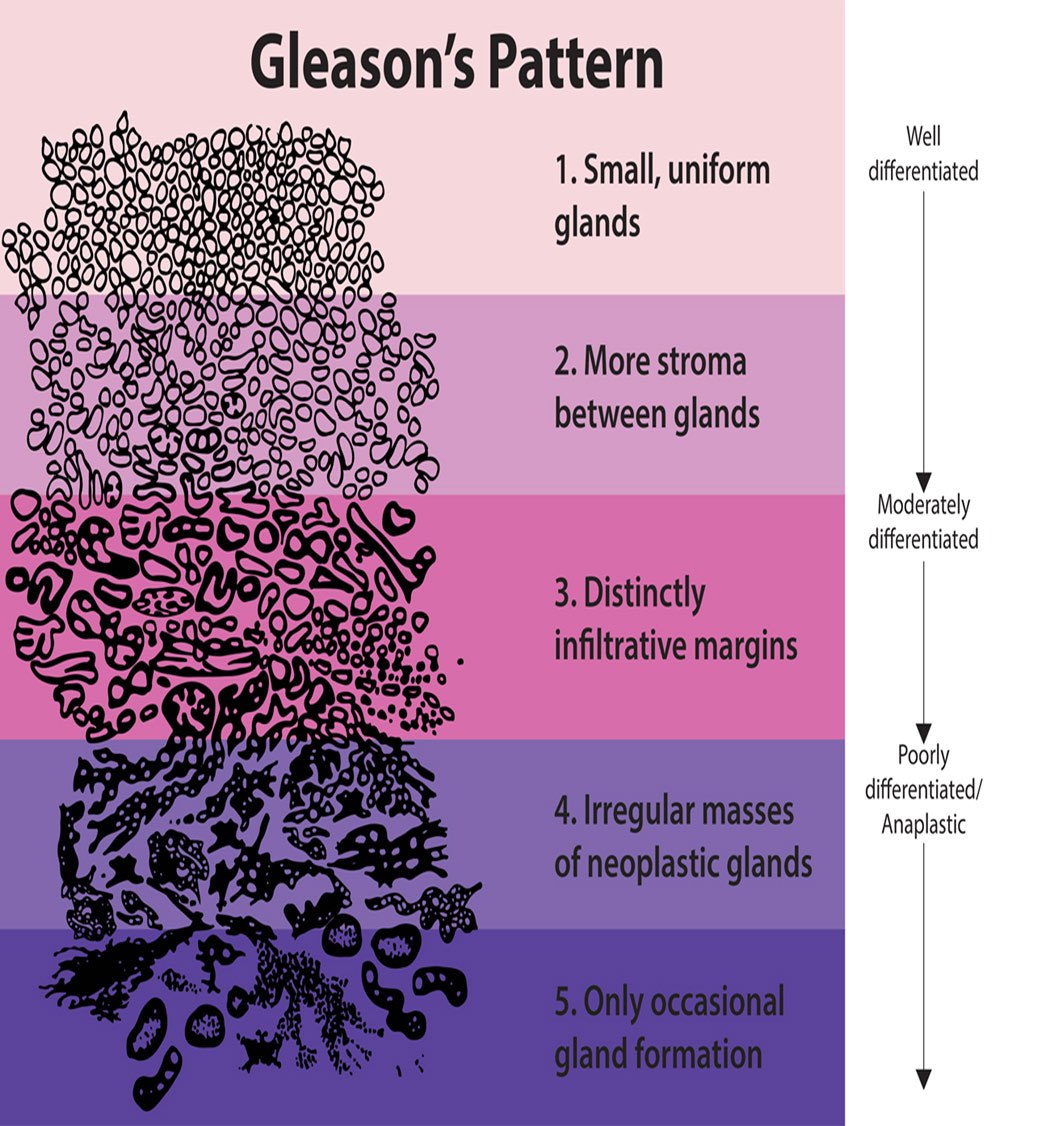When cancer is discovered, it is classified by a Prostate Cancer Gleason Score. This Score or Grade helps to determine how aggressively the prostate cancer is likely to behave.
The pathologist looks at how the cancer cells are arranged in the prostate and assigns a score on a scale of 1 to 5 from 2 different locations. If the cancerous tissue looks much like normal prostate tissue, a grade of 1 is assigned.
If the cancer cells and their growth patterns look very abnormal, a grade of 5 is assigned.
Grades 2 through 4 have features in between these extremes. Cancer cells that look similar to healthy cells receive a low score. Cancer cells that look less like healthy cells or look more aggressive receive a higher score. To assign the numbers, the pathologist determines the main pattern of cell growth, which is the area where the cancer is most obvious and looks for another area of growth. The pathologist then gives each area a score from 1 to 5. The scores are added together to come up with an overall score between 6 and 10.
Gleason scores of 5 indicate very low risk. A Gleason score is 6, is a low-grade cancer. A Gleason score of 7 is a medium-grade cancer, and a score of 8, 9, or 10 is a high-grade cancer. A lower-grade cancer grows more slowly and is less likely to spread than a high-grade cancer.
The Gleason score in addition to the Cancer Stage are a major key to determine treatment options. For example, Active Surveillance – repeating MRIs perhaps yearly to monitor the cancer – is suitable for lower scores. Patients with a higher Gleason score may need treatment that is more intensive, even if the cancer is not large or has not spread.
Gleason X: The Gleason score cannot be determined.
Gleason 6 or lower: The cells are well differentiated, meaning they look similar to healthy cells.
Gleason 7: The cells are moderately differentiated, meaning they look somewhat similar to healthy cells.
Gleason 8, 9, or 10: The cells are poorly differentiated or undifferentiated, meaning they look very different from healthy cells.
Gleason scores are often grouped into simplified Grade Groups:
Grade Group 1 = Gleason 6
Grade Group 2 = Gleason 3 + 4 = 7
Grade Group 3 = Gleason 4 + 3 = 7
Gleason Group 4 = Gleason 8
Gleason Group 5 = Gleason 9 or 10





